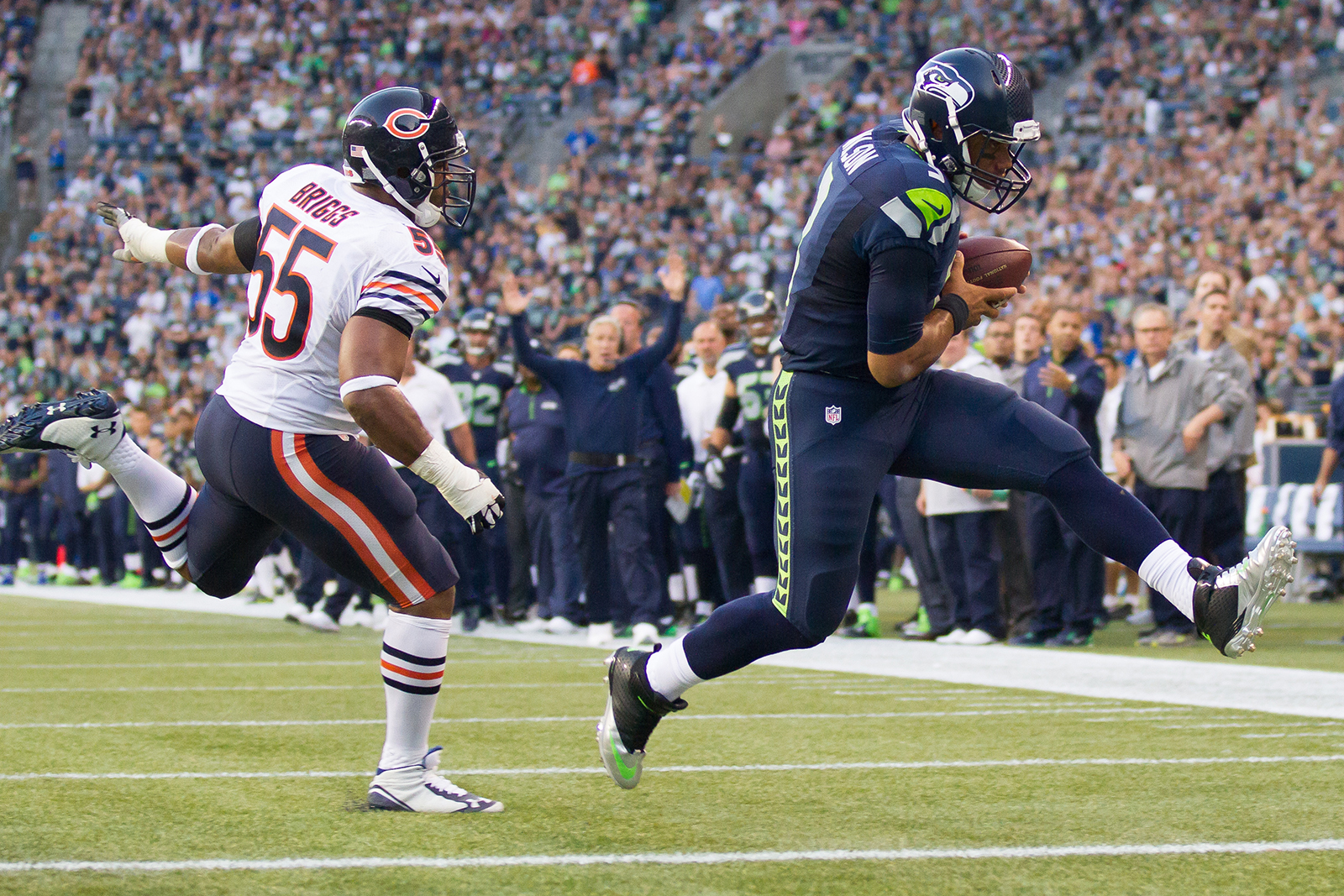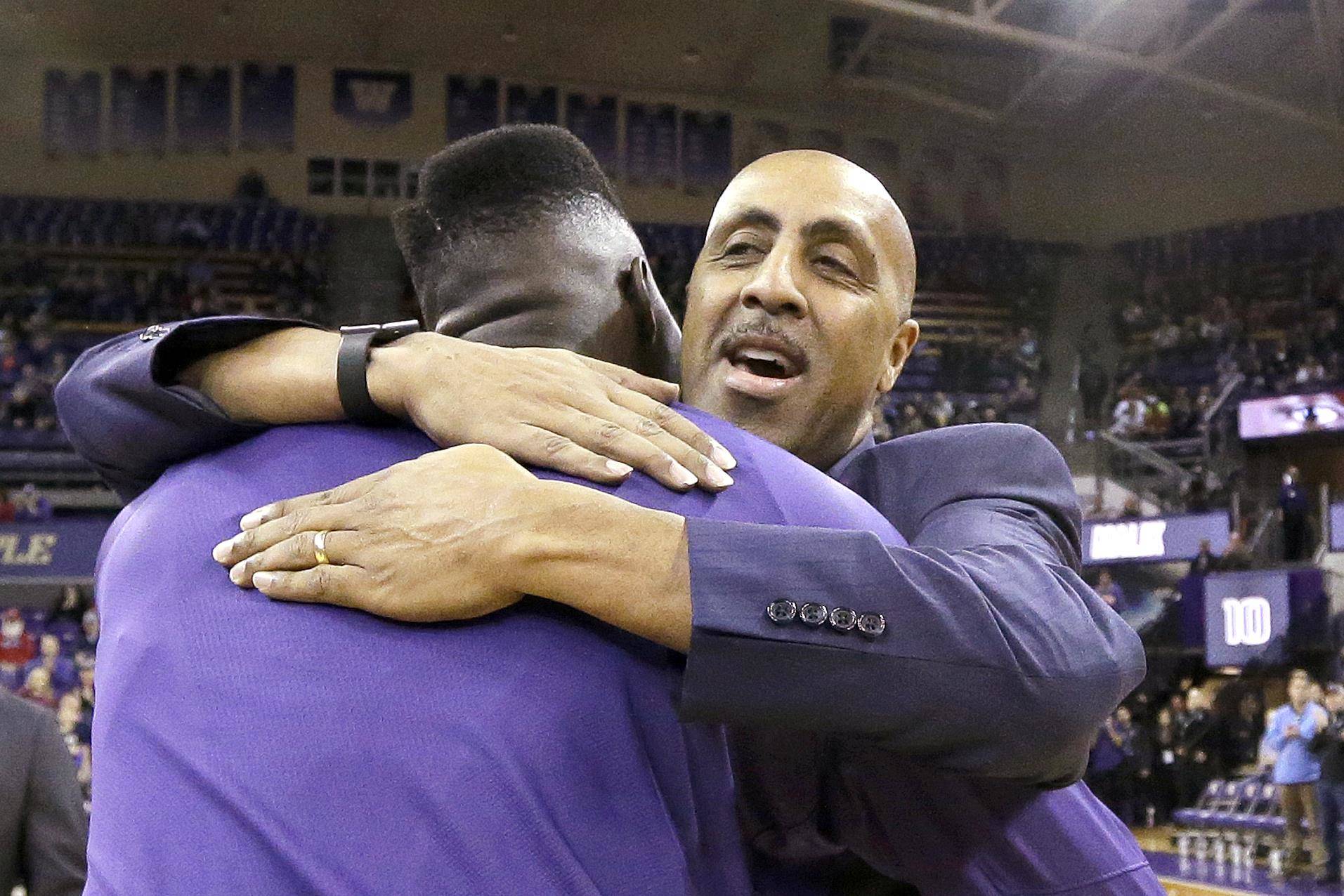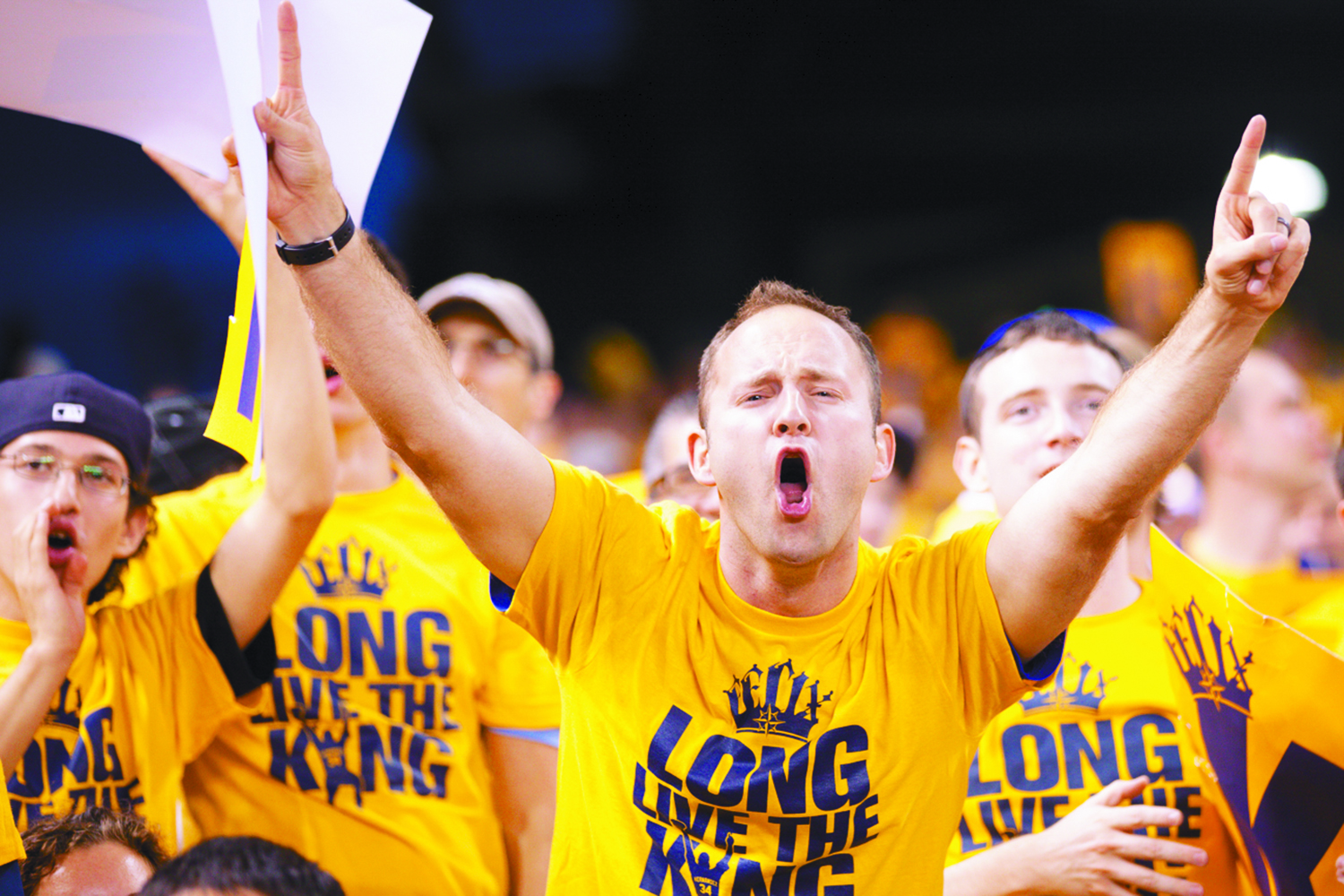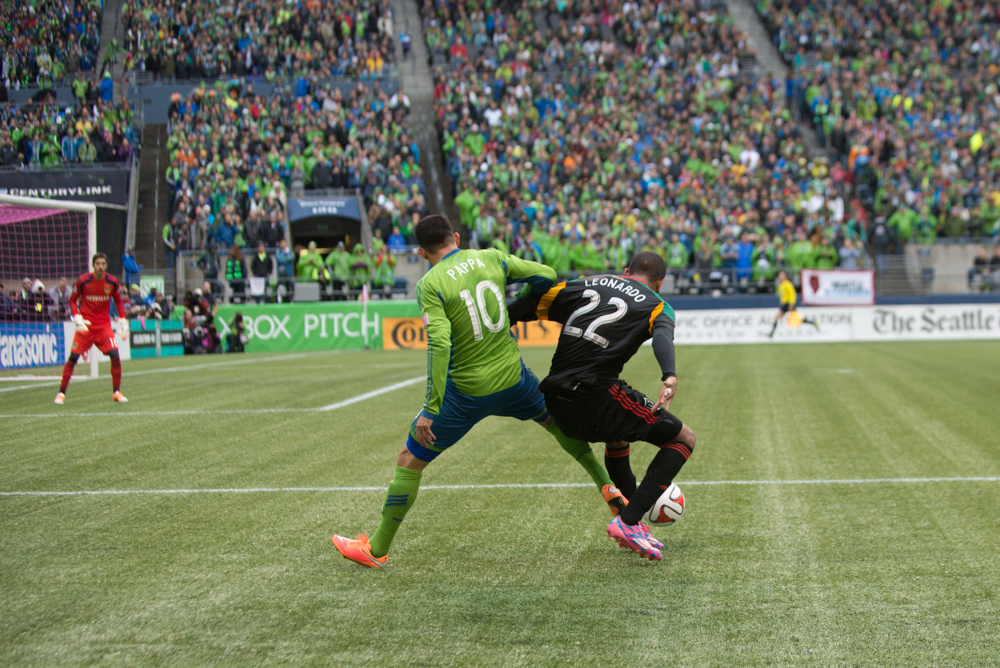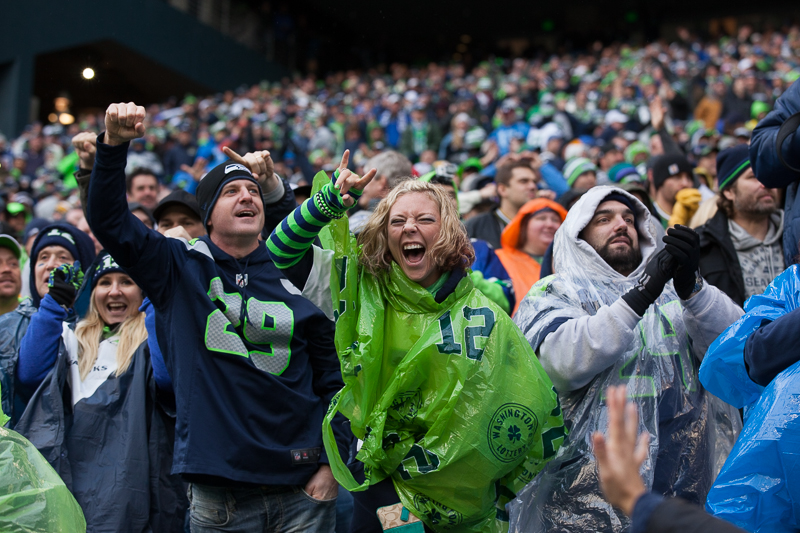When you watch the Seahawks on TV, you’re getting a limited view of the action. TV cameras follow the ball on every play, and newer fans’ eyes tend to as well. But the Seahawks will execute
approximately 2,000 plays this season. Whether you picked up Seahawks fever in January or have been rooting for the team since the Jack Patera years, heighten your appreciation of this incredible team by closely observing some of the Seahawks’ best players, whether they have the ball or not. It’s fun to focus on a small piece of the puzzle as the game unfolds—it’s the best way to see exactly what makes the Seahawks so different from their competitors. Once the play is over, you can always follow the ball on the replay—but you’ll do so with a better understanding of how the ball ended up where it did.
What’s Russell Wilson doing?Watch Wilson closely on a pass play and you’ll see him moving his head and his hips while he holds the ball. All quarterbacks, from high school up, take the snap and go through a series of “reads.” A “read” means Wilson is looking at a receiver and deciding whether he’s open. If not, he moves to his next read, and his next, and his next. Simple, right? Except that Wilson has about four seconds to make up his mind—often less—before mammoths bury him.
If Wilson runs out of time, he scrambles. And this is where he’s brilliant. When you are watching Russell Wilson, you’re watching the prime years of the best scrambling quarterback in decades. What makes Wilson such a spectacular scrambler isn’t speed—he’s fast enough, but no Cam Newton. Wilson’s excellence is both mental and physical.
Mentally, he has the discipline to keep scanning for open receivers when he’s on the move. The novice fan will yell “RUN!” You, a savvy fan, will patiently wait for a receiver to get open, just like Wilson does. Once one does, Wilson unleashes his physical superpower: an unparalleled ability to throw accurately while in motion.
Photo by Jeremy Dwyer-Lindgren for Seattle Weekly
What’s Marshawn Lynch doing?As the team’s star running back, Lynch’s job once he gets a handoff is to correctly identify which running lane offers the best chance for a positive gain. Then—usually with one lightning-quick cut—he gets to that hole as fast as he can. You won’t see a Seahawks running back poking along the line of scrimmage, looking for running room. As you’ll remember from the Shaun Alexander era, that’s a recipe for lost yardage. The goal of the quick cut is to avoid negative plays, something the Seahawks have done consistently well during the Pete Carroll era.
When Lynch doesn’t take a handoff, you’ll see him pause for a second after the snap, then either stay in the backfield to protect Wilson or go out for a pass. The pause is Lynch’s moment to determine whether the opposing team is blitzing, and his savvy in this regard is one of the reasons he’s so valuable.
What are the offensive linemen doing?The Seahawks run an unorthodox system called “zone blocking,” where each lineman is responsible for blocking a particular area rather than a specific man. As you can imagine, mistakes are both highly plausible (“I thought that guy was in YOUR zone!”) and highly dangerous, since miscommunication means a 300-pound man will be running full speed into the backfield. If you or I were put on the Seahawks offensive line, Wilson would be dead by halftime.
When the Seahawks run the ball, zone blocking means that the Seahawks push defenders sideways rather than trying to drive them back. This isn’t “line up and blast your guy off the ball.” It’s more a finesse system, in which the blockers use footwork and agility to direct defenders down the line of scrimmage, opening potential running lanes that are defined before the play.
What are the defensive linemen doing?At the snap of the ball, you’ll usually see nothing of note along the defensive line. Each lineman is responsible for one or two “gaps” at the line of scrimmage. His job is not to try to figure out where the ball is going, his job is to stay in his gap. This is an important feature of Pete Carroll’s defense because it allows players to attack their gaps rather than think about what the play is. The dramatic twist, though, is that not every lineman is responsible for the same gap on every play. Sometimes linemen—even behemoths like 6´1˝, 311-pound Brandon Mebane—will drop back into pass coverage in an attempt to confuse the offensive linemen and the quarterback. Keep your eye on the line—it’s fun to see a giant like Mebane or one of the other D-linemen backpedaling into the secondary, their limbs flapping wildly, like a big dog tossed into the deep end of the pool.
What are the receivers doing?Often, wide receivers are out of the TV frame seconds after the ball is snapped because they’re so damn fast. Usually they are running one of a few predetermined routes. Some of the most common:
Go: Run straight down the field.
Out: Run 8 to 12 yards down the field, cut at a 90-degree angle toward the sideline.
Hook: Run 8 to 12 down the field, stop and turn back around toward the quarterback.
Sometimes, though, and often on third down, one or more receivers will run an “option route.” In this case, the receiver changes what route he is running depending on how he is being covered by the defense. He might run an out or a hook, depending on how the defense plays him. The danger here is that the quarterback and the wide receiver both must make the same assessment of the defense. It’s not difficult to imagine what happens when the quarterback expects a receiver to stop and turn around, but he cuts out to the sideline instead. This is a pretty common tactic on third down, when the receiver just needs a little bit of space to make a catch and fall forward to move the chains.
Photo by Jeremy Dwyer-Lindgren for Seattle Weekly
What is Pete Carroll doing?Not much! Carroll doesn’t carry the ball or tackle anyone, obviously, but he also doesn’t call either the offensive or defensive plays. Instead, Carroll listens via headset to the plays being called. Sometimes he offers suggestions. Three or four times a game, the Seahawks will face a short fourth down or a situation where they could either punt or kick a field goal, and Carroll will make those decisions. This is all pretty standard for an NFL head coach. What makes Carroll different is that, unlike most football coaches, you’ll rarely see a frown cross his face. Most head coaches stand grim-faced like statues of war heroes, usually showing emotion only when displeased. Carroll’s game-day m.o., in contrast, is to strut up and down the sideline, smiling wide, patting guys on the butt, and personifying the “Let’s play hard and have fun” mentality that’s the core of his philosophy.
sportsball@seattleweekly.com
